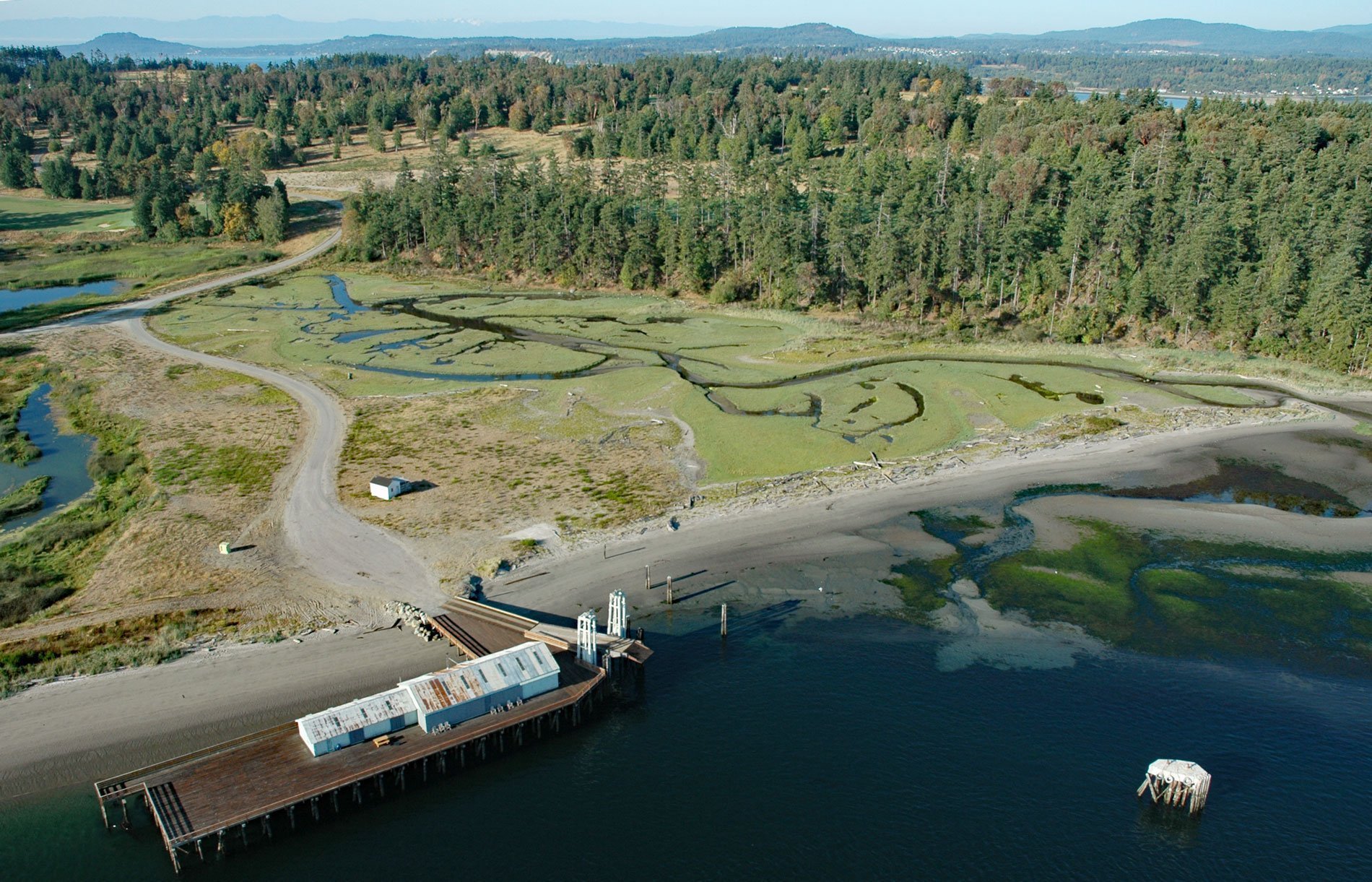James Island is one of the Southern Gulf Islands located in Haro Strait between Cordova Channel to the west and Sidney Channel to the east, about 12 miles (19 km) north of Victoria and 4 miles (6.5 km) southeast of Sidney, British Columbia. The island has an area of about 768 acres (311 ha) and was named for Sir James Douglas who was a Canadian fur trader and politician and became the first Governor of the Colony of British Columbia in 1858.
James Island is part of the traditional territory of the Tsawout First Nation, but in 1904 the colonial government forced the natives off the island. The island was first settled by farm families in the 1870s and was later used as a private hunting ground for Victoria sportsmen. In 1913, Canadian Explosives Limited, later named Canadian Industries Limited, established a dynamite plant on James Island. At its peak, the plant employed 800 people, most of whom lived in a small village on the island. During World War I, the plant produced 900 tonnes (900,000 kg) of dynamite per month for the war effort. The plant was closed in 1977, and in 1979 the buildings were dismantled and removed.
The island is now privately owned and considered one of the most valuable private islands in Canada; however, it is also at the center of a First Nation’s land claim. The island is within the Capital Regional District and land use is governed by the North Pender Island Local Trust Area that includes some of the rarest ecosystems in the world. Read more here and here. Explore more of James Island here:

